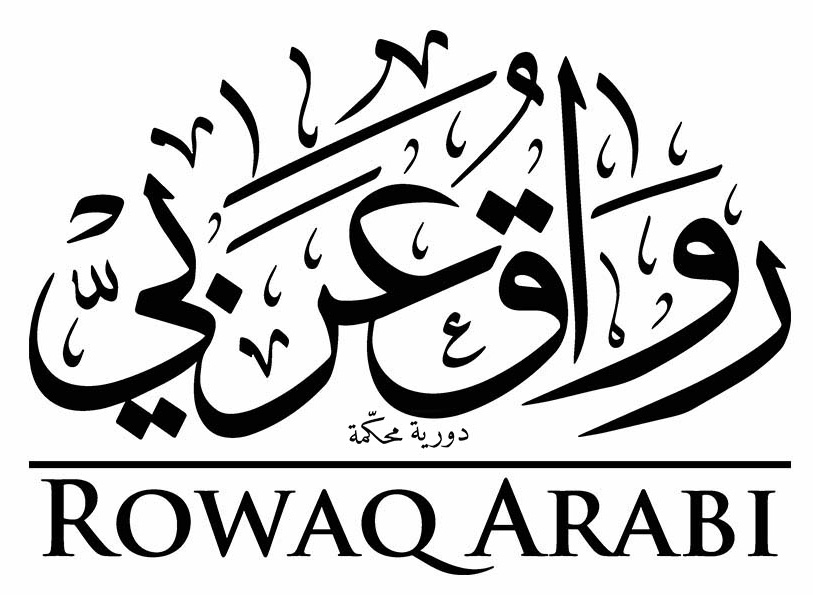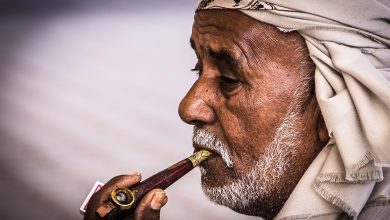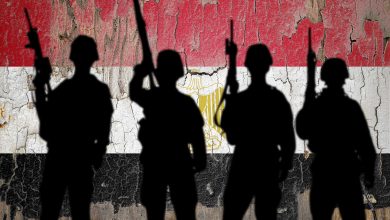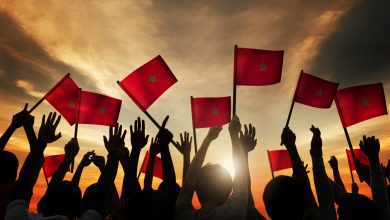Is the Sudanese Revolt a Revolution?
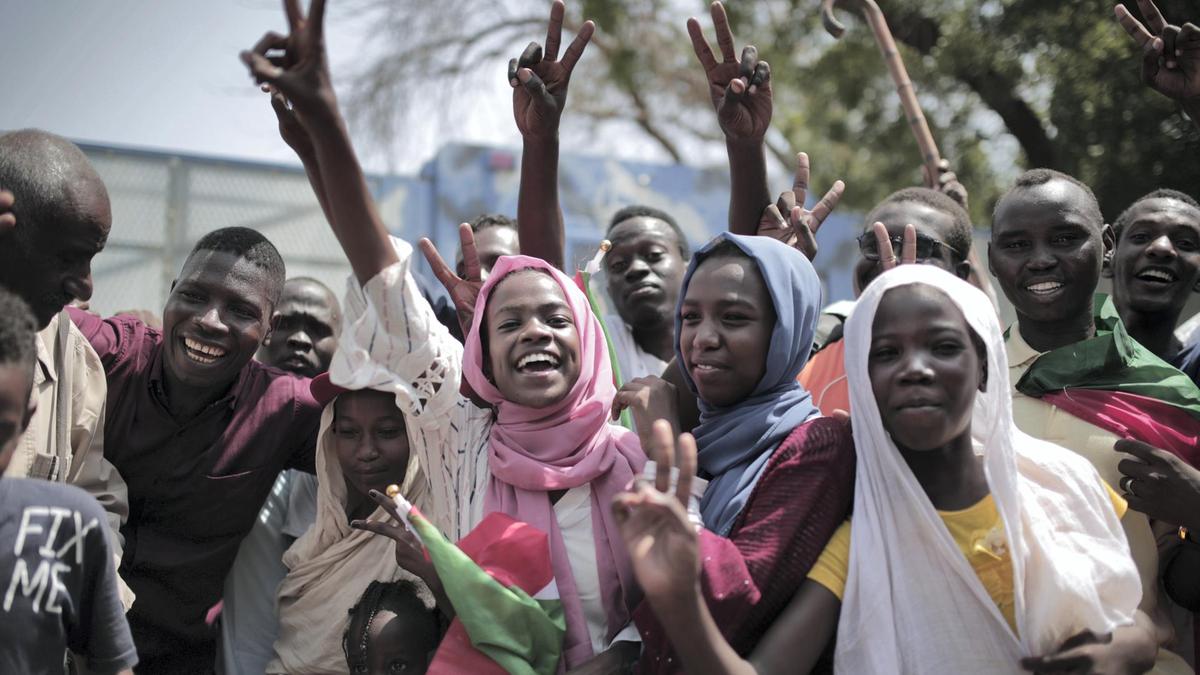
Download this article as PDF
Abstract
On December 19, 2018, people began protesting in several cities in Sudan against dire living conditions and rising prices. Four months later, on 11 April 2019, Sudan’s president Omar Hassan al-Bashir was ousted in a military coup. Since then, the country has been undergoing a process of political transition in which the armed forces and civil society share power and work towards democracy. Several media outlets spoke about a Sudanese Spring or an Arab Spring in Sudan.[i] In this article we will answer the following question: Is the political transition in Sudan indeed a Spring or rather a Revolution? We will first use the chronology set forth in the “Anatomy of Revolution” by Crane Brinton and examine whether the Arab Spring is following a similar pattern, and if so, determine whether we can call it an “Arab Revolution.” Then we will conduct a comparative analysis of the ongoing political transition in Sudan with the political events that happened in other countries of the Arab Revolution, and we will find a very similar pattern or chronology as that which was experienced by those other countries.
Introduction: The Arab Spring
The term ‘Arab Spring’ was first used in 2005. In January that year, the first democratic elections were held in Iraq. The elections were seen as a victory for the democracy agenda of American president George W. Bush. On 14 February, Rafiq al-Hariri, the long serving prime minister of Lebanon, was assassinated in a car bomb in Beirut. As many people were convinced that the Syrian state was behind the assassination, mass protests erupted in the streets of Beirut, demanding real democracy and the departure of Syrian troops from the country. This marked the birth of the 14 March movement, led by Rafiq’s son, Saad al-Hariri. Also in 2005, Egypt had its first ‘open’ presidential elections, in which president Hosni Mubarak had to stand against a contender, Ayman Nour.[ii] These are the reasons why commentators started to talk about an ‘Arab Spring,’ crediting president Bush for the new democratic wave in the Arab world.[iii]
However, despite signs of optimism in the early years of the 21st century, very few people believed that real change was possible in the Arab world. When Tunisians took to the streets in December 2010 and January 2011, observers were still very cynical. One of the columnists of Foreign Policy, Colum Lynch, wrote an article on 6 January 2011, speculating about whether these Tunisian protests were signs of “Obama’s Arab Spring.” This was eight days before the Tunisian dictator Zine el-Abidine Ben Ali fled the country, and 19 days before the protests in Tahrir Square of Cairo started. When crowds turned up in Tahrir Square on 25 January 2011, the Egyptian Nobel Peace Prize winner, Mohamed al-Baradei, was quoted in Der Spiegel, saying: “We could experience an Arab Spring.”[iv]
Arab Spring or Arab Revolution?
The term “Arab Spring” was introduced before the real political earthquake happened in the Arab world. The word “Spring” obviously refers to the “Prague Spring” in 1968, a short-lived liberalisation and democratisation process in former Czechoslovakia, under the leadership of Alexander Dubcek, which was crushed by Russian tanks. In this context, it is difficult to deny the cynical meaning of the word “Spring.” Very few believed the Tunisian protests and later the Egyptian protests would genuinely lead to a more liberal and democratic Arab world.
The question is if we – now nine years later – should still use the term “Arab Spring” or if it is better to use the “Arab Revolution”?
The problem with the word “revolution” is the many definitions of it. All definitions agree that contrary to evolution, revolution means the effort to change political institutions or authority in a relatively short period of time. Some definitions add the element of mass demonstrations. However, the definition of a revolution remains problematic, as is the consensus on when to call a political change a revolution or not.[v]
Called the “second revolution” by some Egyptians, President Mohamed Morsi’s ouster from office provides an example of revolution’s contestability as a concept. From 30 June to 3 July 2013, millions of Egyptians marched on the streets to demand the resignation (or the call for an early presidential election) of Morsi. On 3 July 2013, General Abdel Fattah Sisi, then Minister of Defence, removed Morsi from the presidency and imprisoned him. Supporters of Morsi call this act a military coup; most international observers call it a military coup as well. Those who went to the streets against Morsi call it a revolution.. At the same time, we call the military coup in Portugal in 1974 the “Carnation Revolution,” probably because people took to the streets in great numbers to support the soldiers in their attempt to end the authoritarian regime.
The Anatomy of Revolution
In 1965 Harvard scholar Crane Brinton wrote a book called The Anatomy of Revolution [vi] in which he attempts to identify a pattern in four great revolutions: the Glorious Revolution (1688), the American Revolution (1765), the French Revolution (1789) and the Russian Revolution (1917). He uses the French Revolution as a blueprint and divides large revolutions into four phases: the rule of the moderates, the reign of terror and virtue, Thermidor, and the end of the revolution.
The history of the French Revolution is well known.[vii] On 5 May 1789, King Louis XVI summoned the convention of the Estates General in Versailles to discuss tax reform. The Third Estate disagreed with the voting system by which the 25 million people they represented had the same weight as the other two, much smaller, estates of Catholic clergy and nobility. As their demands were not met, the Third Estate moved to meet alone and first declared itself the National Assembly, and then, on 9 July 1789, the National Constituent Assembly. The revolutionary atmosphere intensified and on 14 July, 954 people took over the Bastille, an old prison in the centre of Paris and a hated symbol of tyranny.
After the revolutionary events and a brief ‘honeymoon’ period, the first phase of a revolution, the “rule of the moderates” began. Under the leadership of the Girondins (a moderate French political party) like Marquis de Lafayette and Honoré-Gabriel Riqueti, comte de Mirabeau, the ‘Declaration of Rights of Man and of the Citizen’ was put into place, as well as a constitution that made France a constitutional monarchy. The downfall of the ‘moderates’ can be attributed to their failure to deliver the promises of the revolution, and their failure to stop the violence as Austria and Prussia invaded France.
The failures of the moderates paved the way for more extreme revolutionaries to take power. A well-organized group of radicals organized an attack on the Tuileries Palace in Paris and overthrew the monarchy on 10 August 1792. The Jacobins of Robespierre took all power on 10 August 1793 and installed a ‘reign of terror and virtue,’ the second phase according to Brinton’s definition of revolution. The new National Convention drafted a new constitution. More importantly, under the leadership of ‘The Incorruptible’ Maximilien Robespierre, every ‘corrupted’ person – anyone against the revolution and its principles – risked death by guillotine. Around 19,000 people were eventually executed. Alongside the Reign of Terror, there was also the ‘Reign of Virtue.’ The Jacobins used religious rhetoric and organized meetings of the ‘Supreme Being.’ They changed the names of streets and squares and put in place a new calendar. They were against gambling, drunkenness, sexual irregularities of all sorts, and ‘ostentatious displays’ of poverty or idleness. At the same time, Robespierre and his revolutionary forces waged a war in the Vendée against royalist forces. An estimated 200,000 people died in this civil war.
On 9 Thermidor of the Year II (27 July 1794) almost all members of the Convention conspired against Robespierre who was executed without trial, together with 22 of his closest associates. The new Thermidorian regime (and the third phase of revolution, according to Brinton) again granted French citizens freedom of religion. However, the regime also embarked upon its own ‘White Terror’ and persecuted, jailed and executed hundreds of Robespierre sympathizers. A third constitution was drawn up and approved in a referendum by 95.4%. After two years of relative stability, the five members of the Directory (the executive power) began infighting. This led to another coup on 4 September 1797 (18 Fructidor, Year V), new purges, and major economic mismanagement.
The fourth phase – the end of the revolution – started with Napoleon Bonaparte’s coup d’état on 9 November 1799. A new constitution, installing the Consulate, was adopted. Napoleon, however, executed another coup and appointed himself First Consul. Again, a new constitution was adopted in a referendum, with an approval rating of 99.9%. In 1802 another referendum confirmed (with 99.8% approval) Napoleon as ‘First Consul for Life.’ Two years later, the Senate passed a bill abolishing the First Republic and installing the French Empire, with Napoleon as its emperor.
The rest of France’s history is also well known: one regime changed after the other; republics, kingdoms and empires replaced one another. This lasted until 1870, when France became a stable democracy under the Third Republic. The constitution of 1875 was the 14th constitution since the beginning of the French Revolution 86 years earlier.[viii]
The Four Phases of the Arab Revolution
Upon initial assessment, a comparative study of the Arab Revolution with the French Revolution may seem unfeasible. The most obvious reason is that contrary to the case of France, the Arab Revolution is not confined to one country. Every country of the Arab world has experienced a different historical trajectory and chronology of events that shaped its specific situation. It is clear, for example, that the revolutions in Tunisia and Syria have seen very different outcomes. However, it is my contention that there are more similarities between the French Revolution and the Arab Revolution than many would expect.
First of all, the revolutionary events in the Arab world began in quick succession, with one closely following the other.[ix] When Mohamed Bouazizi self-immolated on 17 December 2010, protests spread across Tunisia. On 14 January 2011, Tunisian president Zine El Abidine Ben Ali fled to Saudi Arabia. On that very same day, people started protesting in Jordan. On 25 January, thousands of Egyptians began gathering in Tahrir Square. On 11 February, after 18 days of struggle, the Supreme Council of Armed Forces (SCAF) deposed President Hosni Mubarak. On 3 February protests started in Yemen, then in Libya (17 February), Bahrain (19 February), and Morocco (20 February) in Morocco. The next month, March, saw protests ignite in Saudi Arabia and Syria on the 14th and 15th respectively. In a very brief period of time, no less than nine countries were affected by revolutionary events.
The outcomes of these nine revolutionary contexts were very different. In Tunisia, Egypt and Yemen, dictators were ousted in relatively peaceful ways. In Morocco and Jordan, reforms were promised by their respective monarchies. In Bahrain and Saudi Arabia, demonstrations were crushed by the military. In Libya and Syria, demonstrations led to a civil war. With the help of NATO, the Libyan war came to an end with the killing of Muammar Gaddafi. In Syria, the war is still ongoing. But just like in France, a short ‘honeymoon’ period followed the first revolutionary victories in Tunisia, Egypt, Yemen, Libya, Morocco and Jordan.
If we survey the four phases of revolution as defined by Brinton, we can make a simple comparison. Using Egypt as an example, we could say that after the revolution, the ‘rule of the moderates’ was the rule of the Supreme Council of the Armed Forces (SCAF). The army tried to lead Egypt to democratic elections, or at least look like doing so, without too much chaos, even though deadly violence was used on several occasions. As the Muslim Brotherhood won the elections of 2011 and 2012, they could take up the ‘Reign of Virtue,’ but hardly the ‘Reign of Terror,’ even though people in Egypt felt that they were ruled in a (Islamic) way they didn’t like. The Egyptian Thermidor would then be the second revolution of 30 June 2013, followed by the coup of Sisi on 3 July. After one year of the interim-presidency of Adly Mansour, and the “White Terror” against the Muslim Brotherhood and other revolutionary activists, with massacres and the imprisonment of tens of thousands, the election of Field Marshall Abdel Fattah Sisi with 96.1% of the votes meant the end of the revolution or the fourth phase of revolution, according to Brinton. Just like in the French Revolution, every phase of the Egyptian revolution had its own constitution.
Even if the four revolutionary phases of Brinton may not apply entirely to Egypt, there are striking similarities. However, comparing the rule of Morsi with the rule of Robespierre seems to be unfair to Morsi and his Muslim Brotherhood. On the other hand, the fanaticism, the terror and the choice between virtue or death does ring a bell when we compare it with the Islamic State of Iraq and Sham, or ISIS. Just like Robespierre and his Jacobins, ISIS installed a ‘Reign of Terror and Virtue’ in Syria and Iraq and in Sinai and parts of Libya, Yemen and Saudi Arabia.
In every single country where the Arab Revolution passed, we do see moderates (moderate revolutionaries and Muslim Brotherhood) coming to power. In Egypt, the moderates were kicked out by a counter-revolution or Thermidor. In Syria, the moderates were overpowered and kicked out by the ISIS Reign of Terror and Virtue. In Libya, a fight between moderates led to a civil war. At one point, the moderate revolutionaries were overtaken by a Thermidor figure, general Khalifa Haftar, while the moderate Islamists (Muslim Brotherhood) were overpowered by extremists. In Morocco, the King took the moderate Islamists into government. In Jordan, the King was reforming the system, but then halted his reforms.
The Origins of the French Revolution
The French Revolution had economic, social, demographic and political causes. France faced bankruptcy at the end of the 1780s. The country had a mountain of debt after it lost the Seven Years’ War (1756 – 1763) against Britain and after its support to the American War of Independence (1775 – 1783). Fighting to expand and defend its colonial power in order to be able to compete with Britain, France had substantially invested in its naval forces. The loans, and particularly their high interest rates, led to a major financial crisis.[x] On top of that, most French cotton factories collapsed after a free trade agreement on cotton with Britain in 1786, and unemployment and poverty spread all over northern France.[xi]
At the same time, the French people carried a heavy tax burden. Citizens, especially peasants, struggled to feed their families while the king and the nobility were leading sumptuous lives. This disparity in living standards caused them to despise the ruling classes. In the meantime, failed crops and harsh winters led to an increase in the price of bread, and to starvation.[xii]
King Louis XVI attempted to implement reforms, appointing new ministers but quickly sacking them when the French nobility rejected the proposed reforms. Galvanized by the ideas of the Enlightenment, more and more people started to call for reforms and greater budget transparency. It was this struggle and the deadlock of the political system that compelled Louis XVI convene the Estates General for the first time since 1614.[xiii]
The social ground for the French revolution had its roots in an unseen growth of population. In 1700, France had 20 million inhabitants; in 1789, the population had grown to 30 million. Paris had around 600,000 inhabitants, which made it the second largest city in the world, after London. A rapid growth in population always means a sharp rise of young, ambitious people. If there is no opportunity for social mobility, that ambition turns into frustration. In pre-revolutionary France, the guilds that regulated almost the entire economy kept their doors closed and limited the career opportunities for many others. In government, all offices were bought or inherited from father to son.[xiv]
The political cause of the French revolution was a combination of corruption, tyranny, the inability to reform, and the repressive police state. In the majority of his pamphlets, Voltaire attacked the corruption of the purchase of offices (venality), while Mirabeau attacked the lack of tax and budget reforms.[xv] The oppression was not only political but also economic. As France forbade the import of popular Asian cotton, American tobacco and other products, people began smuggling these into the country in order to have a supplementary income for their families. The anti-smuggling police, known as The Farm, started a war against the smugglers, in which many of the latter were killed.[xvi]
The Origins of the Arab Revolution
Similar to the French Revolution, the causes of the Arab Revolution were economic, social, demographic and political. When protesters shouted “bread, freedom, dignity and justice” during the Arab Spring, they were pointing to the same problems. It was no accident that the Arab Revolution started with Mohamed Bouazizi, a young street vendor that self-immolated after the Tunisian police confiscated his chart with vegetables. Bouazizi sold vegetables in order to keep his mother and sister alive and to pay the rent of their apartment. In order to have this chart, he had to mortgage all their possessions. When a police officer confiscated his chart, it was a catastrophe for Bouazizi. On top of that, when he begged the police to return his chart, the officer slapped him in the face. He saw no other way out than to kill himself.[xvii]
The case of Bouazizi sparked the Arab Revolution because large parts of the Arab population could relate to his economic struggle, while the elites were living lavishly thanks to massive corruption and theft. In 2011, the unemployment rate in Tunisia was officially 14% for the general population, while 30% for the age group between 15 and 30 years old.[xviii] The percentage of the Arab population living in extreme poverty – under $ 1.25 a day – reached high numbers: 17% in Tunisia, over 26% in Egypt, and more than 50% in Yemen.[xix]
In the Arab world just like in revolutionary France, demographics exploded. The population of the Arab countries has nearly tripled since 1970, climbing from 128 million to 359 million by 2010, the year the Arab Revolution began.[xx] In 2010, the population of the Arab region was very young, with children under age 15 accounting for a third of the population and young persons aged 15 to 24 years accounting for a fifth; rendering a majority of the population in the region – 54%- currently under the age of 25.[xxi] It is this youthful population that is becoming frustrated with the rigid economic and social system and the lack of opportunities. In several Arab countries, a man can only marry a woman if he owns an apartment. Without work, it is virtually impossible to be able to buy an apartment. In a society where sexual relations are only socially acceptable within the framework of a marriage, this group of unfortunate young people has an extra reason for frustration.
In most Arab countries, presidents are holding office for life. If elections are organized, they are rigged. The elections for parliament might be freer in some countries, yet as parliaments do not effectively have the power to change or reform the system, there is clearly a lack of political freedom. In Lebanon and Syria, holding office had become a family business with sons succeeding their fathers. In Egypt, Hosni Mubarak was preparing to do the same for his son, Gamal. The fact that the political powers were unable, or even unwilling, to invest in health services and education, increased the cry for change.
Finally, the last and probably most important origin of the Arab Revolution was repression and police violence. Not only was Bouazizi deprived of his economic source of income, he was also slapped by the police officer. In Libya and Syria, there was a very high level of repression and police brutality. In Egypt, the months before the revolution began on 25 January 2011, a young man, Khaled Said, was beaten to death by security forces because he had posted videos of police violence on the internet. His siter took a picture of Khaled Said’s brutalized face and posted it on the internet. It triggered a wave of indignation, and a Facebook page called “We are all Khaled Said” was used to call for the revolution on 25 January.
In other words, the origins of the French and Arab revolutions were very similar: poverty, corruption, a demographic explosion, political mismanagement and inability to reform, lack of political freedom and a violent state apparatus killing its citizens. Even though the Arab Revolution is more complicated than the French Revolution because it did not happen in one country but several countries, one can see that it does follow the same structure of other large revolutions, with a rule of moderates, a reign of Terror, a Thermidor or counter-revolution and the comeback of a strongman in the fourth and final phase. In other words, one should not call the events that started in Tunisia in December 2010 and created a wave of protests in 2011 an Arab Spring. There is enough evidence to call it an Arab Revolution.
Is the Revolt in Sudan also a Revolution?
In 1989, 33 years after Sudan’s independence from Egypt, colonel Omar Hassan al-Bashir overthrew the democratically elected civilian government of prime minister al-Sadiq al-Mahdi in a bloodless military coup. In 1993, Bashir dissolved the military council that brought him to power and assumed all of its powers. He suspended associations, political parties, independent newspapers and appointed himself president of Sudan. At that point, Sudan was already fighting a war for ten years against rebels in South Sudan. Despite the fact that the people of South Sudan are largely Christian, in 1983, the central government in Khartoum had imposed sharia law on the entire country, which had triggered a second civil war. When al-Bashir came to power he did not change the law, but instead increasingly enforced it. Bashir aligned himself with the National Islamic front of Hassan al-Turabi. Together they enforced an ever-harsher interpretation of sharia law on the country.
In 2003, rebel groups in Western Sudan took up arms against the central government, as they felt discriminated against as non-Arab Sudanese. The government reacted by arming Arab militias who – according to the International Criminal Court in The Hague – committed crimes against humanity, war crimes, and genocide. The ICC issued two arrest warrants for President al-Bashir. In the months before the independence of South Sudan in 2011, another conflict erupted in the southern provinces of South Kordofan and Blue Nile. One of the elements in the resolution of this conflict in 2013 was al-Bashir’s pledge not to run for office again in 2015. He broke this promise and won a new term as president of Sudan.[xxii]
Origins of the Sudanese Protests
If we take a look at the economic, social, demographic and political situation of Sudan, the picture is similar to the other Arab states before 2011. According to the World Food Program of the United Nations, Sudan is one of the poorest countries in the world. On the UNDP Human Development Index, Sudan ranks 167 of 189 countries. Of a population of 43 million, 2.5 million people are internally displaced and 5.7 million are food insecure and thus in need of humanitarian aid. The number of people in need continues to grow.[xxiii] According to the World Bank, 46.5% of the population is living in poverty.[xxiv]
In 1970, Sudan had a population of 15 million people. In 2018, the population was estimated by the UNDP at 43 million. This number is the same as estimated by the UNDP in 2010. So, even though the population tripled according to the official numbers, in reality the demographic explosion is no doubt higher. The median age is 19, while 63% of the population is younger than 24, which is substantially more than the Arab average of 56%.[xxv]
The lack of political freedoms was obvious in Sudan. According to Freedom House, which ranked Sudan as the seventh least free country in the world, “Sudan’s political system is dominated by an authoritarian president, Omar al-Bashir, and his National Congress Party (NCP), which rely on repression and inducements to maintain power. The regime violently represses regional, religious, and ethnic groups that do not share its narrow nationalist vision. Civil society encounters severe restrictions, religious rights are not respected, and the media is closely monitored.”[xxvi]
Police abuse and violence in Sudan is a well-known reality. According to Cliff Robinson (2017), Sudan “has a reputation of being one of the most corrupt countries in the world. The corrupt institutions of Sudan include the police. The Sudan police have a reputation of extortion, bribery, and the use of violence and retaliation against citizens who complain about police abuse.”[xxvii]
The Sudanese regime also used an Arab militia, called the Janjaweed, to carry out brutal activities. According to the Encyclopaedia Britannica:
“The Arab militias—now referred to collectively as the Janjaweed—were organized as a counterinsurgency force. Supplied with arms and communications equipment by Sudanese military intelligence the highly mobile Janjaweed forces turned the tide of battle in Darfur. They routed the SLA and conducted what was described by international observers as an ethnic cleansing of the Fur, Masalit, and Zaghawa peoples. A typical Janjaweed raid would open with an attack by the Sudanese air force, with helicopter gunships or Antonov bombers targeting civilian settlements. Within hours, mounted Janjaweed would sweep into the area, killing and mutilating the men, raping the women, and killing or kidnapping the children. The raiders would then destroy the basic necessities of village life—burning fields and houses, poisoning wells, and seizing anything of value. Between 2003 and 2008, hundreds of thousands were killed and millions were displaced as the Janjaweed targeted civilian populations across Darfur.”[xxviii]
The Chronology of the Sudanese Revolution
People began protesting in several cities in Sudan on 19 December 2018. The protests were triggered by a decision of the government to raise bread prices from one to three Sudanese pounds.[xxix] From complaints about bread prices, protests quickly turned into calls for political reform and for president al-Bashir to step down. On 22 February, the president declared a state of emergency. After five months of protests and civil disobedience, the Sudanese military deposed president al-Bashir on 11 April 2019.
In contrast to the protesters in Egypt who left Tahrir Square the day after Hosni Mubarak was deposed, the people in Sudan remained in the streets, demanding an entire regime change. On 11 April, the military installed a Transitional Military Council, under the leadership of Lieutenant-General Awad Ibn Auf, who resigned the next day after street protests. He was succeeded by Lieutenant-General Abdel Fattah al-Burhan, the army’s inspector-general. On 3 June 2019, armed forces attacked protesters, killing more than a hundred and raping 70 women.[xxx]
In July 2019, negotiations between the Transitional Military Council and opposition groups ended in an agreement[xxxi] on 17 July to share the power for 39 months, after which democratic elections will be organised. Abdel Fattah al-Burhan will remain head of state until then. On 21 August, Abdalla Hamdok – a civilian – was appointed as Sudan’s new prime minister. In November 2019, the new government dissolved the former ruling party and repealed a series of laws introduced by al-Bashir that strictly regulated the lives of women. In this way, the government responded to key demands of the protesters.[xxxii]
Conclusion
Calling the Arab Revolution an Arab Spring is historically unjust. The Arab Revolution has all the elements of a real revolution, just like the French Revolution. Just like in France after 1789, the Arabs have their moderates, their extremists, their counter-revolution or Thermidor, and their generals who want to end the revolution. Also like the French Revolution, the causes of the Arab Revolution are to be found in demographics, social and economic injustice, and in repression and the lack of political rights.
If we look into the case of Sudan, it is clear that all the factors causing revolution in France and in the countries of the Arab region were also in place before the Sudanese uprising on 19 December 2018. The population tripled in numbers, poverty levels are staggering and worsening, the dictatorship was in the hands of a war criminal, the lack of freedom was abundantly clear and repression, corruption and police violence were widely acknowledged.
As president al-Bashir stepped down on 11 April 2019, which was only nine months before this article was written, it is too early to confirm that the Sudanese revolt will go through the four phases of revolution, as defined by Crane Brinton. However, it is clear that Sudan is currently ruled by moderates who are trying to break with the past without overturning the entire legal system. It is impossible to predict how Sudan will evolve in the months and years to come, but it seems that there is adequate reason to state that the course of events in Sudan is similar to those of the Arab Revolution in general. Therefore, we may conclude that the revolt in Sudan is a Sudanese Revolution.
[i] For example: https://www.reuters.com/article/us-sudan-politics-arabs/arab-spring-comes-later-in-sudan-and-algeria-idUSKCN1RQ0B4 or https://www.france24.com/en/20190503-video-reporters-sudan-spring-omar-al-bashir-protest-uprising
[ii] Debeuf, Koert (2014) Inside the Arab Revolution. Three Years on the Front Line of the Arab Spring (Leuven: Lannoo Campus)
[iii] For example: Pierre Baylou (2011) ‘Printemps arabe, une victoire de George Bush?’, Le Point, 3 March, accessed 10 December 2019, https://www.lepoint.fr/monde/ou-va-le-monde-pierre-beylau/printemps-arabe-une-victoire-de-george-bush-04-03-2011-1302777_231.php or Seatlle Times Staff (2005) ‘The Arab Spring of 2005’, The Seatlle Times, 21 March, accessed 10 December 2019, https://www.seattletimes.com/opinion/the-arab-spring-of-2005/
[iv] Der Spiegel (2011) ‘ElBaradei on democracy’s chances in Egypt’, Der Spiegel, 6 February, accessed 10 December 2019, https://www.spiegel.de/international/world/elbaradei-on-democracy-s-chances-in-egypt-we-could-experience-an-arab-spring-a-743825.html
[v] According to the The New Fontana Dictionary of Modern Thought (Third edition, 1999), A. Bullock and S. Trombley (eds.), pp. 754-746 “a revolution is a fundamental and relatively sudden change in political power and political organization which occurs when the population revolts against the government, typically due to perceived oppression (political, social, economic) or political incompetence.”
[vi] Brinton, Crane (1965) The Anatomy of Revolution (New York: Vintage)
[vii] Hibbert, Christopher (1980) The French Revolution (London: Allen Lane), Hobsbawn, Eric (1996, 1962) The Age of Revolution (New York: Vintage) pp. 54 – 76. Arendt, Hannah (2004, 1963) Over Revolutie (Amsterdam/Antwerpen: Atlas), Doyle, William (2013) France and the age of revolution (London/New York: I.B.Tauris), Hugo, Victor (2001, 1874) Quatrevingt-Treize (Paris: Liberairie Général Française)
[viii] Boyron, Sophie (2012) The Constitution of France: a contextual analysis (London: Bloomsbury)
[ix] This overview is based on Debeuf (2014)
[x] Hunt, Lynn (2013) “The Global Financial Origins of 1789” in Desan, Susanne, Lynn Hunt, William Max Nelson (eds.) The French Revolution in Global Perspective (Ithaca/London: Cornell University Press)
[xi] Walton, Charles (2013) ‘The Fall from Eden: The Free-Trade Origins of the French Revolution’ in Desan.
[xii] Kwass, Michael (2013) ‘The Global Underground: Smugglin, Rebellion, and the Origins of the French Revolution’ in Desan.
[xiii] Ibid.
[xiv] Doyle (2013)
[xv] Ibid.
[xvi] Kwass (2013)
[xvii] De Soto, Hernando (2011) ‘The Real Mohamed Bouazizi’, Foreign Policy, 16 December , accessed 15 December 2019. https://foreignpolicy.com/2011/12/16/the-real-mohamed-bouazizi/
[xviii] Kampmark, Binoy (2019) ‘Rotten in Tunisia: the corrupt rule of Ben Ali’, Global Research., 22 September, accessed 16 December 2019. https://www.globalresearch.ca/tunisia-corrupt-rule-ben-ali/5689840
[xix] Abdel Ghafar, Adel and Masri, Firas (2016) ‘The Persistence of Poverty in the Arab World’, Brookings, 28 February, accessed 14 December 2019. https://www.brookings.edu/opinions/the-persistence-of-poverty-in-the-arab-world/
[xx] Mirkin, Barry (2010) ‘Population Levels, Trends and Policies in the Arab Region: Challenges and Opportunities’, United Nations Development Program, accessed 14 December 2019. https://www.undp.org/content/dam/rbas/report/Population%20Levels,Trends.pdf
[xxi] Ibid. p.11.
[xxii] Overview based on: Daly, M., Holt, P.M. (2000) The History of Sudan: from the coming of Islam to the present day (Harlow: Pearson), Collins, Robert (2008) A History of Modern Sudan (Cambridge/New York: Cambridge University Press), Rolandsen, Oystein H. (2017) A History of South Sudan. From Slavery to Independence (Cambridge: Cambridge University Press), Tibi, Bassam (2008) Political Islam, World Politics and Europe (London: Routledge).
[xxiii] World Food Program Country Brief on Sudan, October 2019, accessed on 12 December 2019, https://docs.wfp.org/api/documents/WFP-0000110744/download/?_ga=2.46744743.1029170953.1575812000-2079971581.1575812000
[xxiv] World Bank Country profile, accessed on 12 December 2019, https://databank.worldbank.org/views/reports/reportwidget.aspx?Report_Name=CountryProfile&Id=b450fd57&tbar=y&dd=y&inf=n&zm=n&country=SDN
[xxv] Mirkin (2010) ‘Population Levels, Trends and Policies in the Arab Region’
[xxvi] Freedom in the World 2019, accessed 12 December 2019, https://freedomhouse.org/report/freedom-world/2019/sudan
[xxvii] Roberson, Cliff (2017) Police Misconduct: a Global Perspective (Boca Raton, Florida: CRC Press)
[xxviii] Encyclopedia Brittannica. Entry: Janjaweed, accessed 14 December 2019, https://www.britannica.com/topic/Janjaweed
[xxix] Al Jazeera, 21 December 2018, accessed 14 December 2019, https://www.aljazeera.com/news/2018/12/protests-rising-prices-spread-sudan-khartoum-181220132130661.html
[xxx] Mohamed Ali, Zeinab (2019) ‘Sudanese doctors say dozens of people raped in sit-in attack’, The Guardian, 11 June, accessed 16 December 2019, https://www.theguardian.com/world/2019/jun/11/sudan-troops-protesters-attack-sit-in-rape-khartoum-doctors-report
[xxxi] Text of the agreement: https://www.dabangasudan.org/uploads/media/5d306eb7c2ab1.pdf
[xxxii] Burke, Jason (2019) ‘Sudan on path of democracy as ruling party dissolved’, The Guardian, 29 November, accessed 16 December 2019, https://www.theguardian.com/world/2019/nov/29/sudan-dissolves-ex-ruling-party-and-repeals-morality-law
Read this post in: العربية
